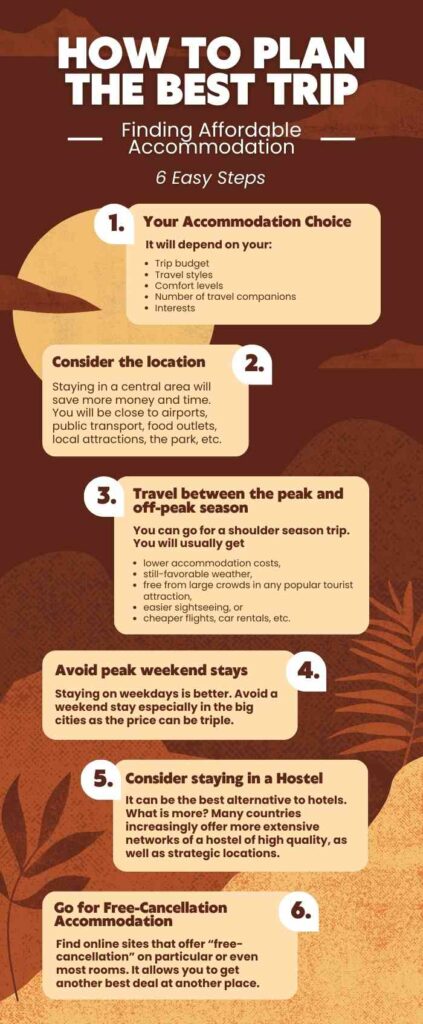Road Trip Rules you should Follow for Road Trips in car

Are you getting ready for a thrilling road trip? Before you hit the road, it’s important to know about the ideal daily driving time. Knowing the rules for daily driving during a road trip can make your experience more enjoyable and safer.
In this article, we’ll provide you with essential tips and guidelines to help you plan your daily driving time, ensuring that you have a comfortable and flexible adventure. Join us as we explore the road trip rules, strike a balance, and make your road trip unforgettable.
Importance of Planning daily Driving time

Planning how long you drive each day on a road trip is really important. It helps keep you safe by preventing tiredness, making sure you take breaks, and avoiding accidents. When you plan your daily driving time, you consider things like how far you need to go, what makes you comfortable, and if there are cool things to see on the way.
This kind of planning keeps you healthy and alert, making your road trip more fun. It’s about finding the right balance between covering the distance you want and having enough time to rest, relax, and enjoy surprises along the journey. So, planning your daily driving time is key to a safe, enjoyable, and memorable road trip.
Factors to Consider

Distance and Overall trip duration
Considering the distance, you’ll cover and the total duration of your road trip is the first important factor. It involves understanding how long you’ll be on the road each day and the total time it will take to reach your destination. This information helps in planning your daily driving time effectively. For instance, if you have a long journey, you might want to break it up into manageable daily segments to avoid exhaustion and ensure a more comfortable travel experience. It’s about finding the right balance between covering the distance and allowing yourself enough time to rest and enjoy the trip.
Personal Preferences and comfort levels
Another critical factor to consider when planning your road trip is your personal preferences and comfort levels. Everyone has different tolerances for how long they can drive in a day and what conditions make them comfortable.
Take into account factors such as how much time you’re comfortable spending in the car, whether you prefer shorter or longer driving days, and if you have specific needs or preferences for breaks and rest stops. Adapting your daily driving plan to align with your comfort levels ensures a more enjoyable and stress-free road trip tailored to your individual needs.
Sightseeing and breaks

In addition to distance and personal comfort, the third crucial factor is considering sightseeing and breaks during your road trip. While it’s important to cover the necessary distance, don’t forget to factor in time for sightseeing and breaks. Plan stops at interesting landmarks, attractions, or scenic spots along your route to make the journey more enjoyable. Breaks are essential for rest, stretching, and maintaining alertness while driving.
By incorporating sightseeing and breaks into your daily driving plan, you not only create a well-rounded travel experience but also ensure that the road trip is as much about the journey itself as it is about reaching the destination.
Recommended Daily Driving Time
When determining your recommended daily driving time, it’s important to consider the following aspects.
General Guidelines for Safe Driving: Follow general safety guidelines for driving, which often include limiting continuous driving to avoid fatigue. Many experts recommend not exceeding 8-10 hours of driving per day. This guideline helps ensure that you stay alert and focused on the road, reducing the risk of accidents.
Adjusting Based on Road Conditions and Terrain: Be flexible and adjust your daily driving time based on road conditions and terrain. Factors such as traffic, weather, and challenging terrain can impact your driving speed and overall progress. Plan accordingly, and if conditions are less than ideal, consider reducing your daily driving time to maintain safety.
Incorporating Rest Breaks and Meals: Integrate regular rest breaks into your daily driving schedule. Taking short breaks every 2 hours or so allows you to stretch, refresh, and stay alert. Additionally, plan your meals during these breaks to ensure you’re nourished and energized throughout the day. This not only contributes to physical well-being but also enhances the overall experience of your road trip.
Tips for a Smooth Road Trip

Embarking on a road trip can be an exciting adventure, but it requires careful planning and adaptability to have a smooth journey. Here are some essential tips to consider:
A. Planning Ahead for Accommodations
Accommodations are vital for the success of your road trip. Planning ahead and considering the following aspects can enhance your experience:
1. Research and Book in Advance:
• Conduct thorough research on accommodations along your route.
• Use online platforms to compare prices, read reviews, and make reservations in advance.
2. Consider Budget and Preferences:
• Determine your budget for accommodations to ensure financial comfort throughout the trip.
• Take into account personal preferences, such as hotel amenities, location, and type of lodging (hotel, motel, Airbnb).
3. Check for Amenities and Parking:
• Ensure that accommodations provide necessary amenities, especially if you have specific requirements.
• If traveling by car, confirm the availability of parking facilities at your chosen accommodations.
4. Stay Flexible:
• While planning ahead is crucial, remain open to adjustments based on unforeseen circumstances.
• Have a list of backup accommodations in case your original plans need to change.
By proactively addressing these considerations, you can enjoy a comfortable and stress-free stay during your road trip.
B. Staying Flexible with the Schedule
Flexibility is key to managing the unpredictability that often comes with road trips. Adapting your schedule to the following principles ensures a more relaxed and enjoyable journey:
1. Allow Buffer Time
• Incorporate buffer time into your schedule to account for unexpected delays, traffic, or detours.
• Avoid overpacking your itinerary to allow room for spontaneity.
2. Prioritize Must-See Stops
• Identify key attractions or landmarks you don’t want to miss.
• Allocate sufficient time for these stops and be flexible with other parts of your schedule.
3. Monitor Weather Conditions
• Keep an eye on weather forecasts and be prepared to adjust your route if necessary.
• Safety should be a priority, so modify plans to avoid hazardous conditions.
4. Embrace Unplanned Opportunities
• Stay open to serendipitous discoveries along the way.
• Be willing to deviate from your original plan if a hidden gem or interesting event catches your attention.
Maintaining a flexible mindset ensures that your road trip remains an adventure rather than a rigid itinerary, allowing for memorable experiences and unexpected joys.
C. Listening to Your Body and Adjusting Plans Accordingly
Taking care of your physical and mental well-being is essential during a road trip. Here are ways to listen to your body and make necessary adjustments:
1. Prioritize Rest and Sleep:
• Establish a consistent sleep schedule to prevent fatigue.
• Listen to your body’s signals for rest, and avoid pushing yourself to exhaustion.
2. Hydration and Nutrition:
• Stay hydrated by regularly drinking water, especially during long stretches of driving.
• Plan for nutritious meals and snacks to maintain energy levels throughout the journey.
3. Take Breaks and Stretch:
• Schedule regular breaks to stretch your legs and relax your muscles.
• Incorporate short walks or exercises during stops to combat stiffness.
4. Recognize Signs of Stress:
• Be aware of signs of stress or discomfort and address them promptly.
• Adjust the pace of your trip if needed, allowing for more leisurely stops or extended breaks.
5. Incorporate best Time:
• Build in downtime for leisure and relaxation.
• Whether it’s enjoying a scenic view, reading a book, or simply taking in the surroundings, allow moments of tranquility.
By actively listening to your body’s needs and making adjustments accordingly, you ensure that your road trip remains a positive and rejuvenating experience.
Common Mistakes to Avoid

Avoiding common mistakes can make your road trip more enjoyable and less stressful. Here are some pitfalls to steer clear of:
Overestimating Daily Driving Capacity: Overestimating how much you can drive in a day can lead to exhaustion and safety risks. It’s crucial to be realistic about your driving capacity and consider factors like traffic, road conditions, and personal endurance. By planning manageable daily driving distances, you can avoid burnout and ensure a safer journey.
Ignoring the Importance of Rest: Ignoring the need for rest can have serious consequences on your well-being and safety. Fatigue impairs judgment and reaction time, increasing the risk of accidents. It’s essential to prioritize rest breaks and get adequate sleep each night. Listen to your body’s signals and take breaks when needed to stay alert and refreshed throughout your trip.
Failing to Plan for Unexpected Delays: Failing to anticipate unexpected delays can disrupt your itinerary and cause frustration. Road trips often come with unforeseen challenges like traffic jams, construction zones, or weather-related issues. It’s wise to build flexibility into your schedule and allow extra time for contingencies. Having a backup plan and staying informed about road conditions can help mitigate the impact of delays and keep your journey on track.
Conclusion
A successful road trip hinges on thoughtful planning, adaptability, and prioritizing well-being. By carefully considering factors like daily driving time, accommodations, and schedule flexibility, travelers can optimize their experience and minimize common mistakes. Planning ahead for accommodations ensures a comfortable stay, while staying flexible with the schedule allows for spontaneous discoveries and enjoyable detours.
Listening to one’s body, getting enough rest, and making adjustments accordingly are crucial for maintaining physical and mental well-being on the road. Additionally, recognizing and avoiding common mistakes, such as overestimating driving capacity and neglecting the importance of rest, contributes to a safer and more pleasurable journey.
By combining these tips and learning from potential pitfalls, road trippers can create lasting memories and make the most of their adventure. Whether it’s the open road, scenic landscapes, or unexpected surprises, a well-planned and flexible approach ensures that the road trip becomes an enriching experience, fostering a sense of adventure and creating moments to cherish.
How much did you like Our detailed Road Trip Rules you should Follow for Road Trips in car? Review Also, please share these Blogs with your friends on social media.
Recommended
- Travel Hacks
- 12-Ways to Keep Kids Entertained
- Travel Tips for Single Parents
- Top travel tips for seniors

Meet David Hoper, a passionate travel Blog writer with 7+ years of experience in travel content. Through his exemplary storytelling and engaging narratives, he shares his experiences and brings destinations to life. With a keen eye for detail and a love for exploration, he has cultivated a diverse portfolio of travel blogs that inspire and inform readers worldwide.








